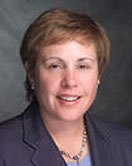News
UB CAT supports life sciences industry
-
 Print
Print -
 Comments
(1)
Comments
(1)
-

“The UB CAT is an advocate for all of us.”
The UB Center for Advanced Biomedical and Bioengineering Technology (UB CAT) is distributing more than $440,000 to help 18 companies in Western New York develop promising life sciences technologies in the 2010-11 fiscal year.
The funding will support a range of research-and-development activities, including the development of a peptide therapeutic for muscular dystrophy; the development of interfaces for a computerized speech-generation system; and a six-month clinical trial of Lung Flute, an FDA-approved, hand-held device that employs sound waves to help patients with chronic obstructive pulmonary disease dislodge mucus from their lungs.
The typical award totals between $10,000 and $50,000. Companies receiving the money must match the money with dollars of their own. Each funded project leverages the expertise of a UB researcher as principal investigator.
The UB CAT selected recipients based on recommendations by its Industrial Advisory Board, whose membership includes representatives of such regional firms as Life Technologies, Moog Inc. and Ortho-Clinical Diagnostics Inc. Hand in hand with funding, the center provides companies with business-development assistance, workforce-development programming, networking, and access to research and development facilities, equipment and expertise within UB.
The UB CAT, a center within UB’s New York State Center of Excellence in Bioinformatics and Life Sciences, is one of 15 Centers for Advanced Technology that the New York State Foundation for Science, Technology and Innovation (NYSTAR) funds to support university-industry collaboration in research, education and technology transfer. The focus is on helping New York state-based businesses gain a technological edge on their competition.
“The Centers for Advanced Technology (CAT) program was created to support university-industry collaborative research and technology transfer in commercially relevant technologies,” says Edward Reinfurt, executive director of NYSTAR. “We congratulate the UB CAT on its efforts to help advance life sciences technologies in Western New York.”
“The UB CAT provides a powerful combination of research and development resources, plus funding that is critical to growing our life sciences industry in New York state," says Marnie LaVigne, director of business development for the Center of Excellence and the UB CAT. “The program’s track record shows that we’re facilitating company progress at a crucial point through our academic-industry partnerships that lead to new and improved products and services that, in turn, create new jobs in our region.”
NYSTAR announced the UB CAT as a Center for Advanced Technology in 2007. The designation lasts 10 years, during which the UB CAT receives about $1 million annually from NYSTAR. The money goes toward cultivating new life sciences companies and helping existing firms expand through new or improved product lines by utilizing UB’s research and development resources.
The UB CAT has supported nearly 60 projects leading to more than $117 million in non-job economic impact and helped Western New York’s life sciences sector create more than 250 new jobs.
Success stories include Kinex Pharmaceuticals, a local drug-discovery and development company that has leveraged the resources of the UB CAT for several years in a row to support its product development. Since late 2004, the company has raised more than $18 million from angel investors and landed about $2 million in state and federal grants. Kinex also moved formerly outsourced clinical trials to Buffalo, keeping dollars and jobs in the region.
Support Kinex received this year from the UB CAT will go toward the development of a novel therapy for glioblastoma, a common form of brain tumor, and toward formulation of the treatment compound to be tested in the Phase 1 clinical trial of the therapy.
Lyn Dyster, Kinex vice president for research operations, says funding, as well as access to specialized facilities and equipment via the the UB CAT, have been instrumental in the company’s growth. Additionally, the center has alerted Kinex about new funding opportunities, both internal and external, and sponsored industry events that Dyster and colleagues have attended.
Kinex has its offices at the Center of Excellence, a location that has catalyzed collaboration with UB researchers, including Jun Qu, an assistant professor of pharmaceutical sciences whose laboratory includes a rare and impressive collection of mass spectrometry equipment.
Importantly, Dyster says, LaVigne and the UB CAT have acted as advocates, educating local, state and federal powerbrokers about the importance of the life sciences sector to the New York economy.
“The UB CAT is an advocate for all of us,” Dyster says. “LaVigne is the one telling the state how important it is to have early-stage funding for companies like ours, and sharing the economic development impact when companies like ours are successful.”
Information regarding the UB CAT and the center’s award application process is available on the Center of Excellence’s website. The award program accepts project applications on a rolling basis for review by the UB CAT’s Industrial Advisory Board. Applications for the 2011-12 fiscal year will be due in early April 2011.

Reader Comments
Robert E. Baier says:
Recommend expansion of current workforce-development programming to include CAT/CoE-supported entry-level jobs at each of the selected Life Sciences companies funded. Focused, or "bullet trained", new employees with required Regulatory Affairs knowledge can seek these positions through Millard Fillmore College's REMeDI (Regulatory Environment of Medical Devices and Implants) and COILS (Career Opportunities in Life Sciences) Certificate programs.
Posted by Robert E. Baier, Professor, 11/29/10